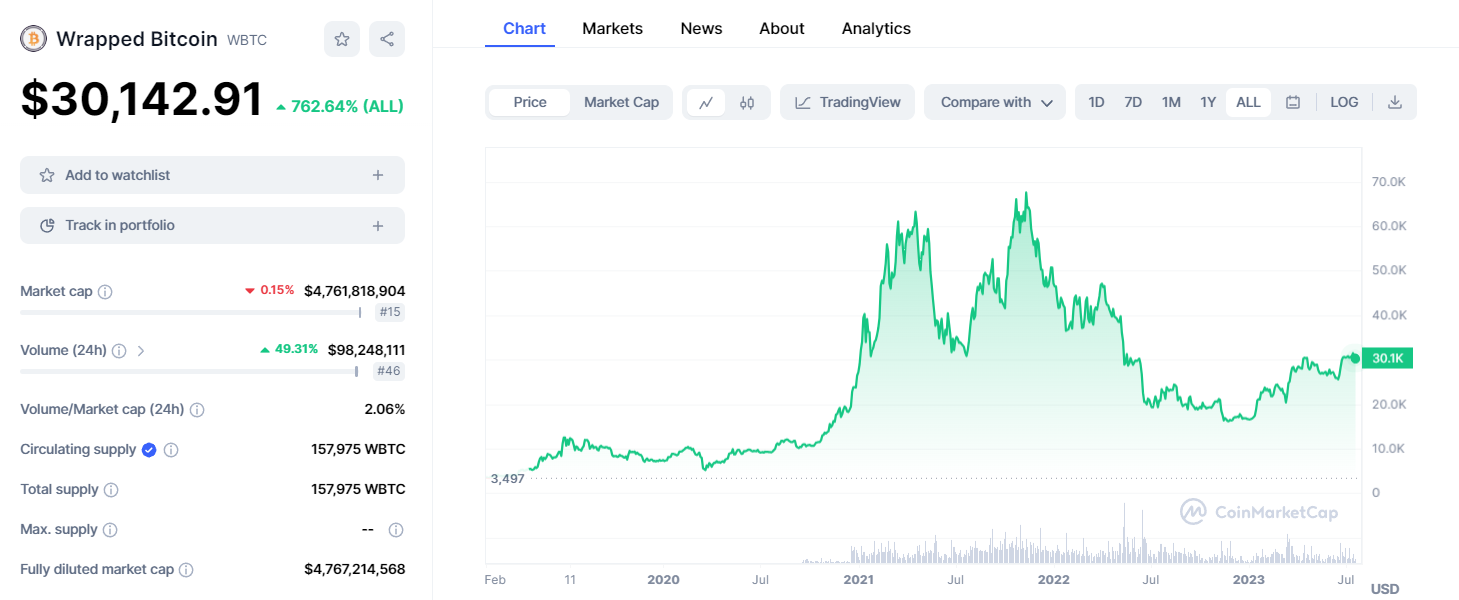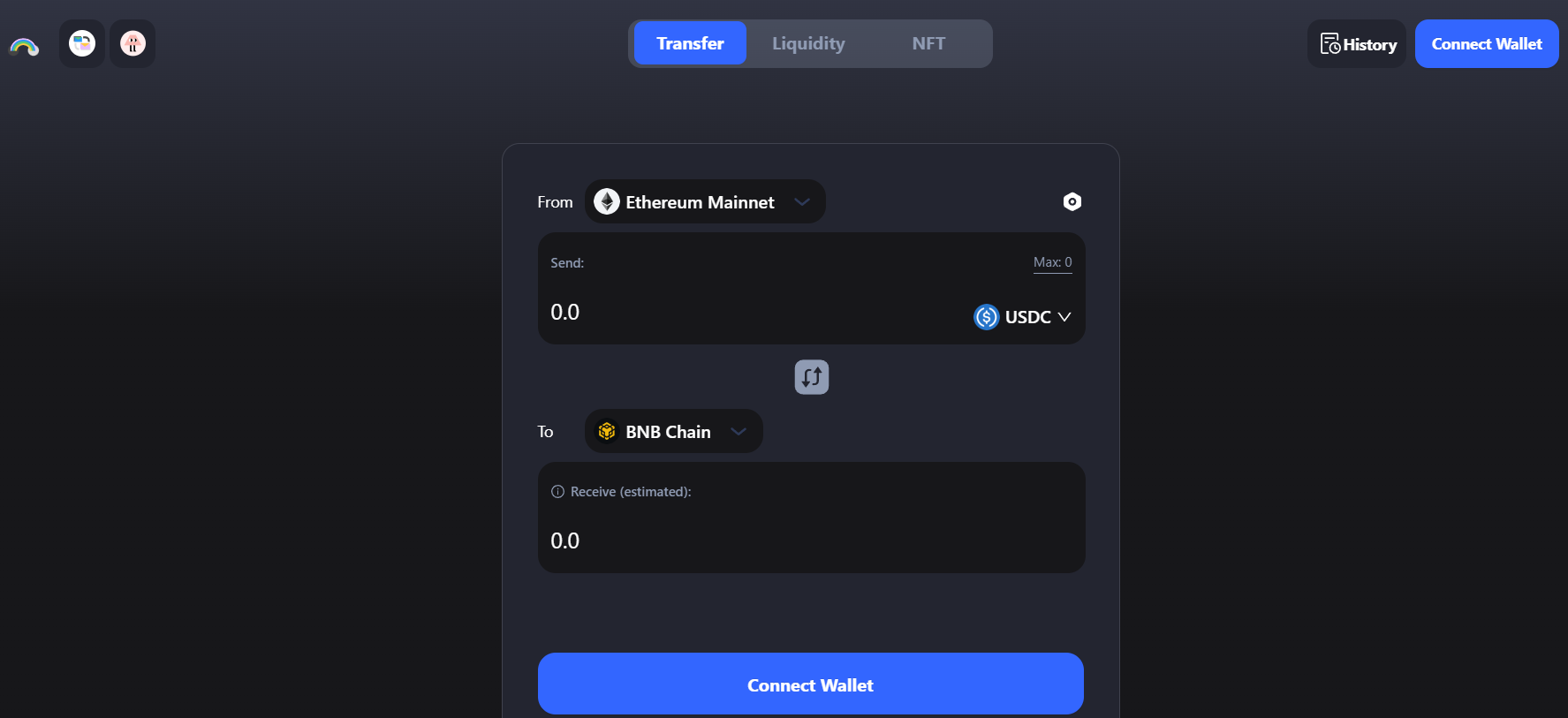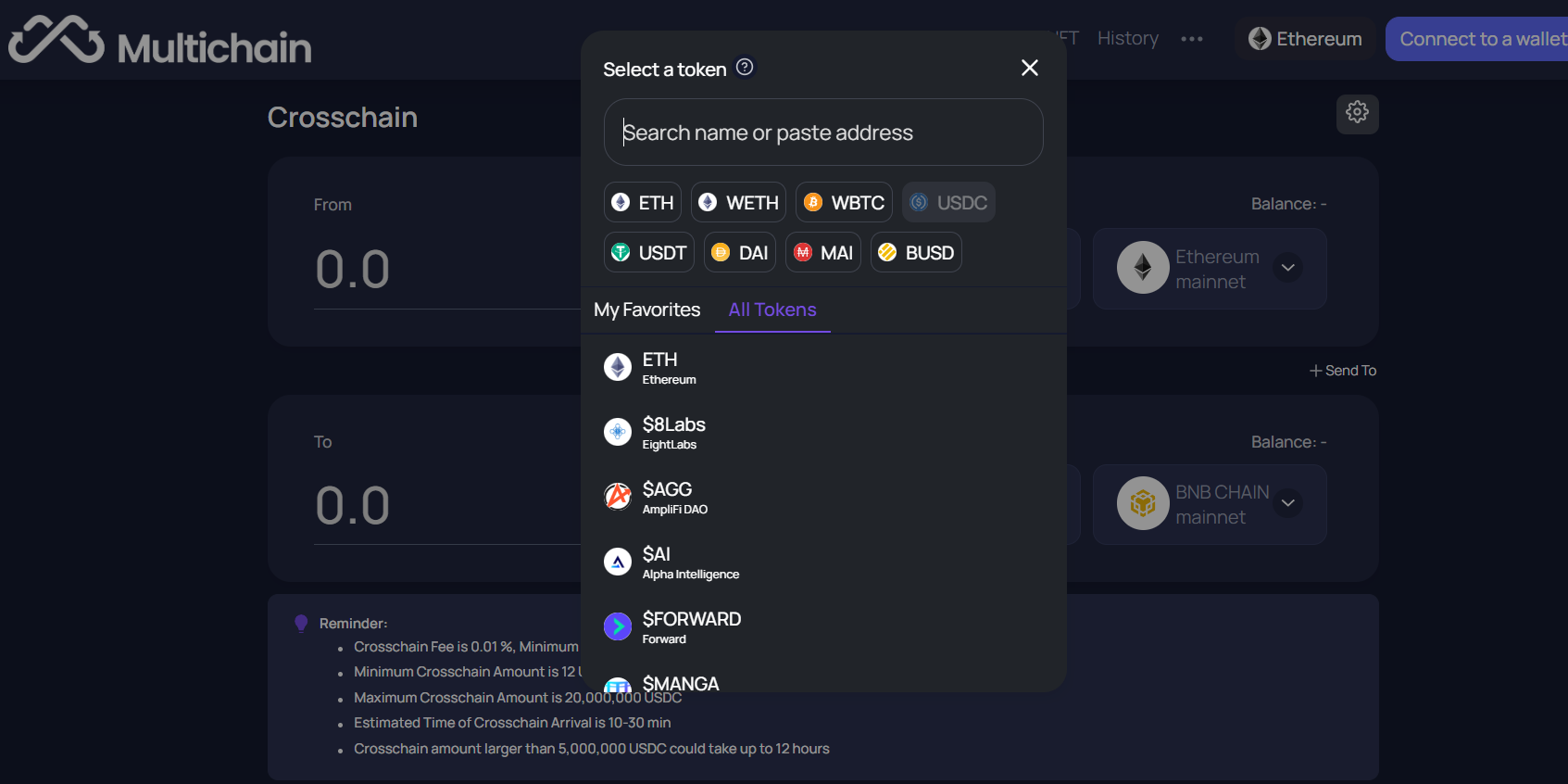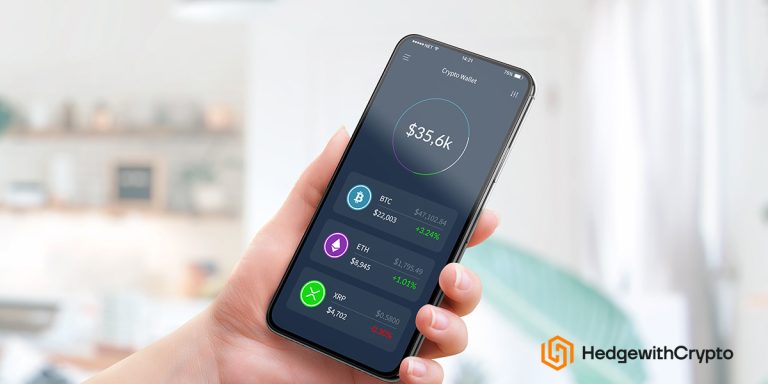What Are Blockchain Bridges?
TABLE OF CONTENTS
Blockchain bridges are an important part of the decentralized finance infrastructure. They can help investors make the most of their crypto portfolios. However, certain bridges have been exploited in the past, leading to hacks and lost assets.
Overview of Blockchain Bridges
Blockchain bridges are software protocols that facilitate the transfer of digital coins, tokens, or information between two different networks. They serve as a means of interoperability, allowing users to move tokens, smart contracts, or other forms of data across separate blockchain platforms where incompatibility issues may be present.
The Problem Blockchain Bridges Solve
Interoperability among different blockchains has long been one of the cryptocurrency industry’s big issues. Certain coins being incompatible with other, popular networks, presents a significant barrier to widespread adoption and adds a layer of complexity to navigating the DeFi sphere. For example, the two biggest blockchains in the world are Ethereum and Bitcoin. However, investors generally can’t use BTC on Ether-based applications, and vice versa. Of course, one could trade their BTC for ETH on a well-known crypto exchange, but this incurs transaction fees and is generally time-consuming.
Blockchain bridges are a relatively new technology that proposes a solution to this problem. These bridges are essentially software that allows two distinct, separate blockchains to interact with one another. There are several potential outcomes to these interactions – such as converting token standards, moving digital assets across networks, or minting new coins.
How Do Blockchain Bridges Work?
Blockchain bridges provide the framework to facilitate token transfer between two distinct blockchain networks. A blockchain bridge simplifies this process through several methods. The most well-known way Blockchain bridges work is using the “wrapped asset” method. Essentially, it involves using an asset that follows the price of an underlying cryptocurrency built for use on another blockchain. For example, wrapped Bitcoin (wBTC) tracks the price of Bitcoin, but is an ERC-20 token and thus can be used on the Ethereum network.

Because of Bitcoin’s limited smart contract capability, this transition must often be completed by a centralized entity. However, for chains with superior smart contract infrastructure, wrapping usually involves smart contracts being executed on the corresponding networks. The bridge will hold the original coins deposited (e.g., token A) in a smart contract, and create another to issue the new tokens (e.g., wrapped token A). The wrapped token can then be used to interact with another network’s dApps.
Additionally, the wrapped token can be “unwrapped” at any time by using the bridge and converting it back into the locked token A. The remaining wrapped tokens are burned, and the investor will receive the equivalent amount back in token A.
The other token issuance method some bridges employ is known as the “liquidity pool method”. This process works similarly to liquidity farming and relies on network participants to succeed. Investors must lock up certain ratios of tokens on the bridge’s underlying network, which are then used to complete bridging requests. The investors providing liquidity are often rewarded for their efforts in running the bridge.
The Most Popular Blockchain Bridges
1. Celer cBridge
Celer Network’s cBridge is an all-encompassing, trustless blockchain bridge that supports converting assets from a variety of distinct networks. At its most basic, cBridge is a powerful way to exchange tokens from one network to another, as the platform is interoperable with most popular chains, including:
- Ethereum
- BNB
- Avalanche
- Polygon
- Fantom
- Flow
- Gnosis Chain
Crypto transaction speeds via this bridge are decent, although not as fast as a typical centralized exchange. Similarly, the fees can hit 1% or higher, which is more expensive than some alternatives. cBridge offers liquidity pools that investors can connect to and earn up to 6% APY. The platform also supports NFT transfer across eight chains – BNB, Ape, Ethereum, Polygon, SPS, Arbitrum Nova, Arbitrum One, and Polygon zkEVM.
Related: How to use Arbitrum bridge and bridge tokens.

2. Synapse
Synapse is regarded as one of the most “widely-used” cross-chain protocols in the DeFi space and has built a reputation for security and speed. The platform’s bridge is compatible with many well-known blockchains, including Dogechain, Harmony, Ethereum, BNB Chain, and Polygon.
Synapse also doubles up as a decentralized exchange with all sorts of useful DeFi applications. The platform has an in-built swapping program that lets investors move between popular stablecoins such as DAI and USDC. Additionally, users can participate in various pools to earn over 10% APY and contribute to the health of the Synapse bridge. As of July 2023, Synapse has nearly $200m locked and has bridged upwards of $40 billion in assets.
3. Portal
Portal – backed by Wormhole – has one clear priority in mind: interoperability. While most bridges focus on working between Ethereum Virtual Machine (EVM) compatible chains, Portal expands its reach beyond these protocols. There are over 15 blockchains available, including NEAR, Aptos, Klaytn, and Terra Classic (as well as major players like Ethereum and BSC).
The Portal platform uses Wormhole, which is a “communication bridge” that allows the prominent blockchain Solana to interact with other DeFi networks. Portal also supports converting digital collectibles across a variety of blockchains, making it an excellent choice for NFT enthusiasts. Like some competitors, Portal’s platform has a dedicated swapping hub for stablecoins, on top of a bridge to the Layer 1 blockchain Sui.
4. Polygon Bridge
Polygon Bridge isn’t exactly the most interoperable bridge on the market, only supporting direct interaction between the Polygon and Ethereum networks. That said, the trustless bridge makes up for it in a variety of ways.
Bridges can be a difficult concept for newcomers to the crypto scene. With this in mind, Polygon Bridge has designed its platform and created one of the most aesthetically pleasing and simple user interfaces available. It is incredibly easy to use – and paired with the bridge’s lightning-fast transaction times and low fees, it’s a great option for those wanting to move back and forth between the burgeoning Ethereum and Polygon ecosystems. The bridge uses a Proof of Stake mechanism to achieve consensus, which means independent validators must verify each transaction.
Additionally, the platform’s developer – Polygon Labs – is one of the industry’s most trusted entities. The bridge has never encountered any issues with smart contract bugs or potential hacks, making it an excellent starting point for the security conscious. Of course, investors that need a broad range of bridging options should stick to a platform with superior interoperability.
5. MultiChain (AnySwap)
Formerly known as AnySwap, MultiChain is easily the most impressive bridge on this list in terms of interoperability. The platform supports basically every major blockchain – from the big players like Ethereum, Avalanche, BNB Chain, Polygon, and Harmony, all the way down to more obscure chains like PulseChain, Meld, and Terra Classic. The platform even supports non-EVM bridging for networks like Bitcoin and Litecoin. NFT traders and liquidity farmers can also find a home on MultiChain.
The platform’s biggest downside is probably its complexity and breadth of options. Multichain isn’t necessarily ideal for beginners, as the user interface is a little clunky compared to some other options. However, the more experienced crypto trader will likely find Multichain fulfills all of their bridging requirements.

What Are The Different Types Of Blockchain Bridges?
There are three main types of blockchain bridges: trusted (centralized), trustless (decentralized), and hybrid. Hybrid bridges are “trust-limited” meaning there is some involvement of a central authority, but their powers are restricted.
Trusted bridges
Trusted bridges are centralized, giving them a clear downside for privacy-conscious blockchain users. Investors must relinquish control of their assets when locking them into a trusted bridge’s smart contract. For some, this is a small price to pay for the convenience of interoperability. For others, it compromises the security of their crypto portfolio.
In that sense, using a trusted bridge is much like making a trade on a centralized exchange. Investors hand over their assets to an intermediary who facilitates the transaction between two different currencies. They are called “trusted” bridges because the user must trust the central entity to act in good faith and not steal their assets. Despite their lack of decentralization, trusted bridges are usually faster and cheaper than their trustless counterparts.
Trustless bridges
Trustless, or decentralized bridges, are the preferred type of bridge among the blockchain community. These bridges use smart contract algorithms to lock and unlock assets across separate networks. They often work just like any other decentralized blockchain, relying on a web of independent validators to process transactions and achieve consensus.
The advantage of a trustless bridge is clear – it’s decentralized and investors need not worry about a central authority misbehaving and stealing their assets. This is a key philosophy of the cryptocurrency space. However, these bridges also come with several downsides:
- They can be slower and more expensive than centralized bridges.
- Because there’s no central authority, if any issues arise the investor likely won’t be able to source help.
- Trustless bridges use smart contracts to operate. Smart contracts that aren’t audited and vetted for potential bugs can be exploited and result in catastrophic network failures and hacks.
Related: Is Bitcoin safe and has it been hacked?
Blockchain Bridges Can Be Used For Many Things
Blockchain bridges are primarily used to swap one cryptocurrency to another. This is generally done to interact with a certain decentralized application – for example, some Polygon-based dApps require MATIC to be used as a gas fee, rather than Ether. There are many bridges that perform this function across a whole range of networks, with the main blockchains being BNB, Polygon, Ethereum, Fantom, Solana, Avalanche, and Optimism.
In some instances, blockchain bridges can be used to directly interact with a decentralized application. For example, the bridge might automatically convert an investor’s wallet to function within the Avalanche blockchain.
Alternatively, an investor may just use a blockchain bridge as a way to reduce crypto fees compared to using a traditional crypto exchange. Some bridges can offer attractive fees, especially on specific trading pairs. This may end up significantly more cost-effective than using a centralized, or even decentralized exchange.
Finally, blockchain bridges that use liquidity pools can be a useful source of income for savvy DeFi investors. This works much the same as providing liquidity to an Automated Market Maker (AMM) like PancakeSwap and WOO Network. The key difference is bridges tend to use single-asset pools, which removes the risks of impermanent loss when one token in a pair rises (or falls) in value.
Risks Of Using Blockchain Bridges
Although blockchain bridges present a useful solution to a long-lasting issue, they come with several risks that must be considered. For starters, using a centralized/trusted blockchain bridge comes with counterparty risk – there’s no guarantee the authority converting an investor’s assets will actually complete this task. Although it’s unlikely, the possibility of them running off with someone else’s cryptocurrency is there.
Decentralized/trustless bridges can be just as risky. Such platforms rely on smart contract algorithms to operate smoothly. Any major flow in the software’s coding can result in an exploit and the potential of a targeted attack.
Past Hacks
Some of the biggest DeFi hacks in history have come thanks to defects in a bridge. Perhaps the most notorious blockchain bridge hack occurred in March 2022 when the Ronin Bridge was compromised. The platform experienced heavy traffic around this time due to the popularity of the Axie Infinity game and its associated cryptocurrency, AXIS. Using a fake job opening to install spyware onto a senior developer’s computer, the hackers managed to gain access to 5/9 (a majority) of validators for the bridge.
This lets the hackers approve transactions that would otherwise be blocked. Ultimately, the hacker(s) managed to make off with about $600m worth of ETH and USDC, marking one of the most devastating blockchain bridge attacks of all time.
Wormhole, the popular bridge between Solana and Ethereum, also came under fire in February 2022. A hacker fiddled around enough with the bridge’s smart contract code to find an exploit that allowed them to bypass signature verification. The thief then minted 120,000 ETH to help them steal approximately $230m worth of cryptocurrency.
Other hacks include:
- Harmony Hack. In June 2022, hackers stole about $100m from Harmony’s bridge after private keys were distributed.
- Binance Hack. Binance Bridge, a product from the world’s most popular centralized exchange, was hacked in October 2022 to the tune of $570m.




